Motor Oil Viscosity — Which Oil is Best For Your Engine?
Motor oil viscosity can be confusing, so here’s a layperson’s explanation
Modern motor oil is multi-viscosity. So it has one “thickness” when it’s cold and a different thickness when hot. That’s why all multi-grade motor oil’s show with two numbers. The first number, the one in front of the “W” (stands for Winter, not Wax) represents the oil’s viscosity at 0°F -17.8°C (its cold start performance). The second number, after the dash (—) represents the oil’s viscosity at 212°F (100°C). So a multi-grade oil viscosity may be shown as 0W-16, 0W-20, 5W-20, 5W-30, etc.
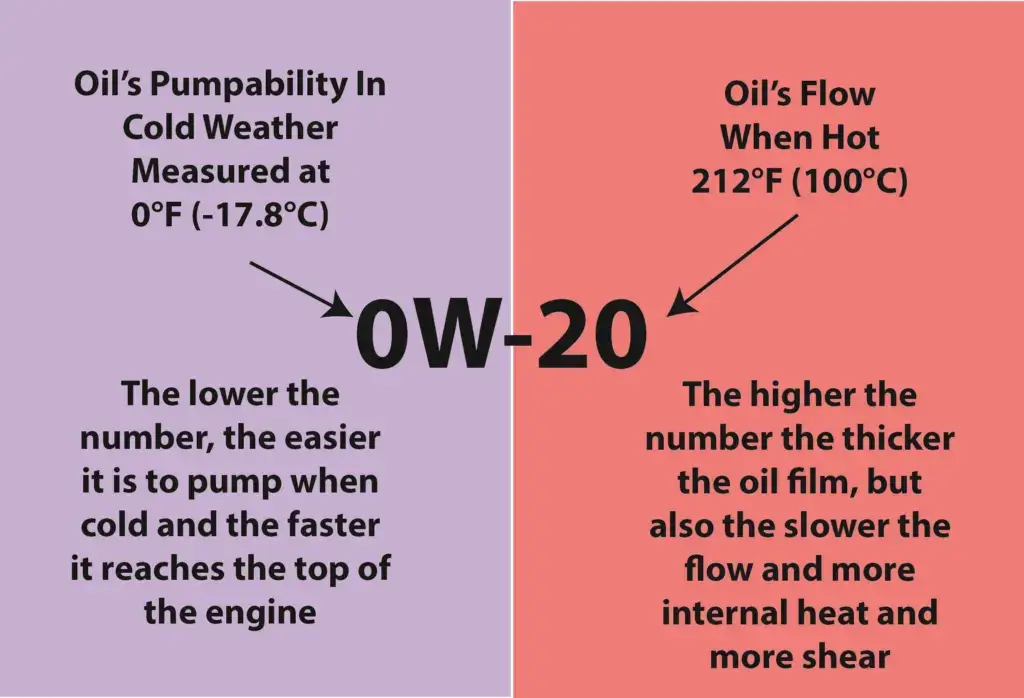 Where most misunderstanding comes in
Where most misunderstanding comes in
Carmakers recommend an oil viscosity based on the following factors:
• The amount of oil flow and pressure needed in clearances to prevent the parts from touching when under load while also keeping them lubricated and cooled.
• The type of oil oil pump used, whether it’s a fixed or variable output
• The required strength of the oil film between the piston rings and cylinder wall
• The expected operating temperatures.
Despite carefully considering all these factors by engine designers, some people think they know better. In fact, most people think that using a higher viscosity oil is better for the engine. It’s not. It’s true that a heavier weight oil provides a slightly thicker oil film that helps worn piston rings seal better against the cylinder wall, there’s no free lunch here.
The are many downsides to using a thicker oil in your engine
• Thicker oil doesn’t flow as well, so it can’t remove heat as quickly from high friction areas like bearing clearances, and removing heat is one of oil’s jobs.
Thicker oil also generates more internal friction when being pumped and when under load. So it not only doesn’t remove heat, it also creates heat and that causes thermal breakdown.
• Using a thicker oil, thicker than recommended by the carmaker, causes the viscosity improver additives to shear faster, which reduces it’s viscosity and oil film strength. In other words, using a heavier weight oil, while temporarily providing slightly better compression, actually increases engine wear and ultimately thins to the point where it doesn’t even provide the thicker oil film people used it for in the first place.
If using a thicker oil is actually a good thing, then carmakers would fill their engines with 90W-140 gear oil. They don’t. They’re not stupid.
Other misconceptions about motor oil
• Kinematic viscosity represents the oil’s internal resistance to flow and shear due to gravity.
• Dynamic viscosity refers to the oil’s resistance to flow when an external force is applied.
Here’s a practical example of the difference between kinematic and dynamic viscosity
Get a jar of honey and a jar of mayonnaise, both at the same temperature
Insert a knife into each jar, hold the jar, and stir. Which is harder to stir? The honey. So you could say it’s more viscous (thicker), right?
Now, lay each jar on its side and let the honey and mayonnaise flow out. Which one flows out faster? The honey. But wait, you said the honey was more viscous (thicker). So why did it pour faster than the less viscous mayonnaise?
Simple:
• The honey has less resistance to gravity flow (kinetic viscosity) but higher resistance to movement when a force is applied (dynamic viscosity).
• The mayonnaise has higher resistance to gravity flow (kinetic viscosity) and low resistance to movement when a force is applied (dynamic viscosity).
Dynamic (absolute) viscosity is the “W” number
When you start a cold engine, you need to move the cold oil through the engine. You’re pumping it (exerting a force on it), so you want the lowest resistance to flow. In the honey/mayonnaise example above, you’re want mayonnaise in your engine on a cold start instead of honey because it will pump easier because it has a lower dynamic viscosity. It also has less shear (breaking apart of the oil’s viscosity improver molecules)
Kinematic viscosity is the second number
Once the engine and oil is heated, you want the oil to easily slip through the small bearing clearances. Oil pressure pushes the oil into the bearing clearance and the load provided by the journal increases pressure on the oil. But as the oil moves toward the edges of the bearing, pressure drops to 0. Once the oil is pumped into the clearance, the journal’s spin and the oil’s resistance to flow determines how easily it flows out and drains back to the sump.
An oil with a high kinematic viscosity will have higher resistance to flow in those situations. It will heat up more and be less able to move heat out of the bearing.
Testing oil’s dynamic (absolute) viscosity
Dynamic viscosity is the measurement of the oil’s resistance to flow as cold temperatures due to internal friction. It can be tested in two ways, with a rotary viscometer and with a In this case, take two beakers and fill each with different viscosity oils, both at the same temperature. Insert a rod into each and measure the amount of force required to each of the two oils at the same speed. The higher viscosity oil will require more force. In other words, the higher viscosity oil has a higher internal friction and thus a higher dynamic or absolute viscosity.
The Brookfield rotary viscometer is often used to measure 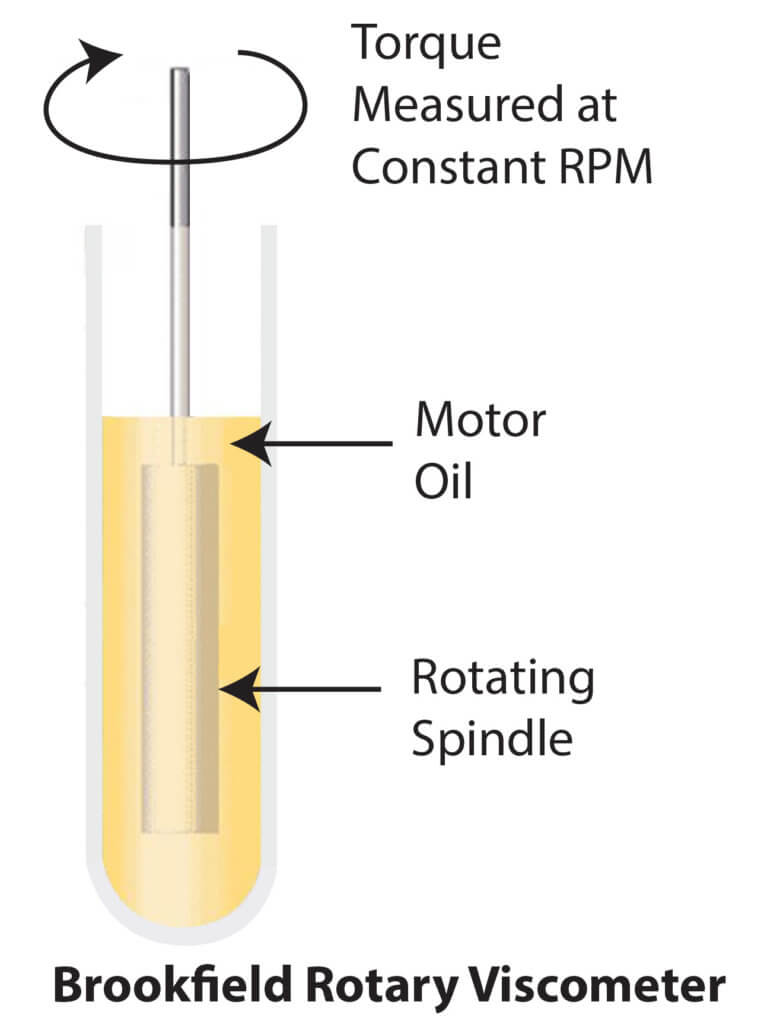 dynamic oil viscosity. The test oil at a specified temperature is poured into the viscometer and a spindle is inserted. The spindle is rotated at a determined RPM and the torque required to maintained the RPM is measured. The results are specified in centipoise (cP).
dynamic oil viscosity. The test oil at a specified temperature is poured into the viscometer and a spindle is inserted. The spindle is rotated at a determined RPM and the torque required to maintained the RPM is measured. The results are specified in centipoise (cP).
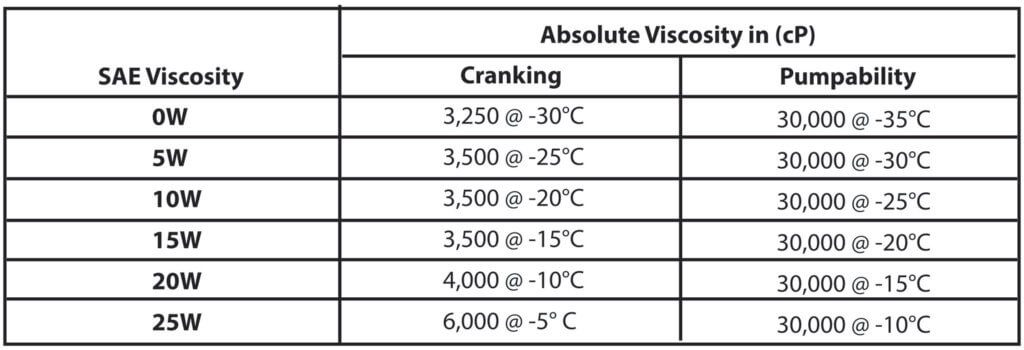
How kinematic viscosity is measured
Motor oil heated to 100°C is placed in a “U” shaped tube. The tube contains an orifice of a set size and a capillary tube of a certain length.
A vacuum is applied to an open end of the tube to draw the oil up to the staring point mark. The instant the vacuum is removed a timer is started and the oil drains down to the ending mark. The time to drain from the starting point to the engine point determines the oil’s kinematic viscosity. It represents the oils resistance to flow under gravity at 100°C
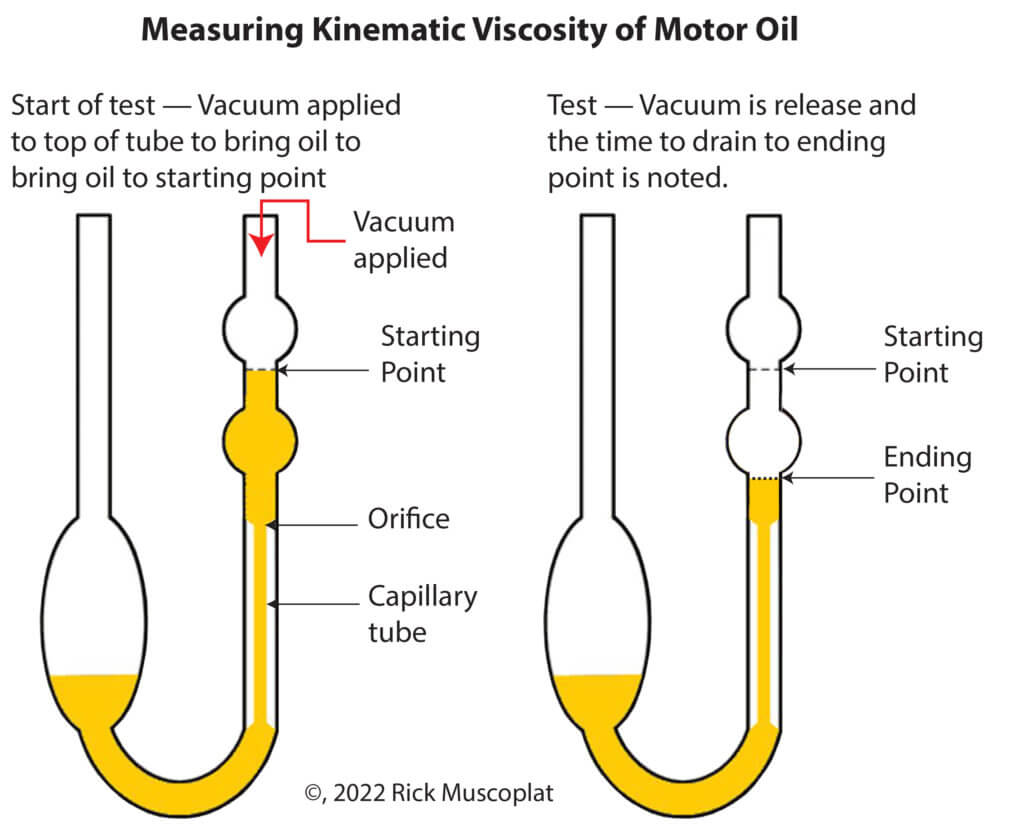
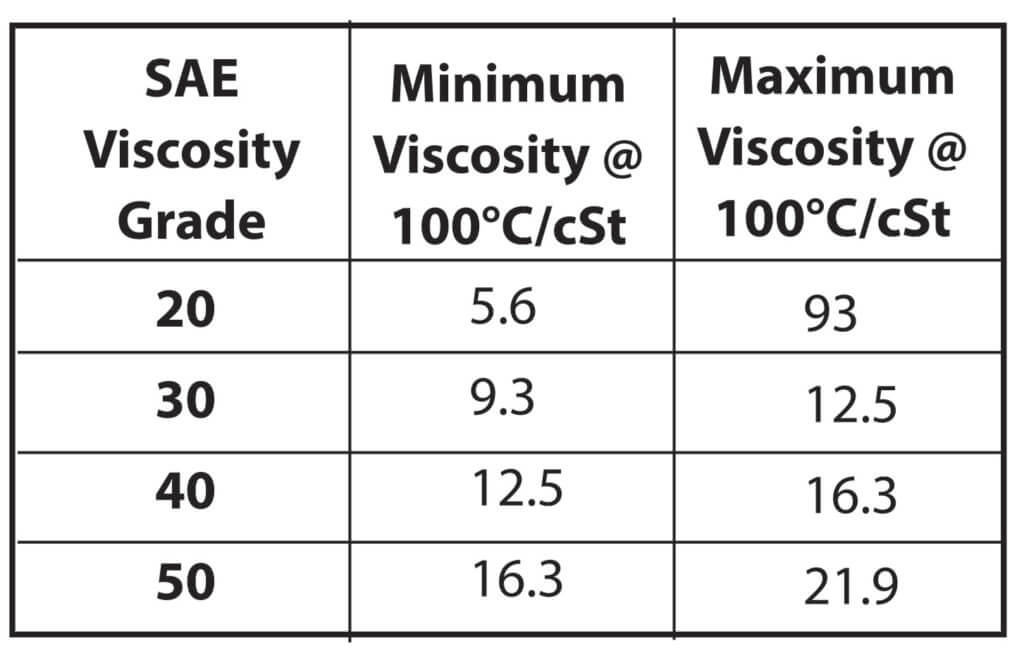
Oil viscosity and oil film strength facts
Oil film thickness is determined by the oil’s viscosity and additives.
Oil Film Strength is the oil’s ability to lower the effects of friction and control wear by means other than the film thickness.
An oil film has many layers moving relative to each other created by the force of rotation of the journal and the stationary bearing. This force is called hydrodynamic friction. Hydrodynamic friction causes a loss of power which is converted into heat and dissipated in the lubricant and carried away to the oil sump. Using a thicker oil can provide more hydrodynamic force at lower crankshaft speeds. But thicker oil increases friction and stress on components at higher engine speeds.
Thicker oil also reduces total oil flow and engine cooling. Oil flow is at least as critical as oil pressure in maintaining the hydrodynamic forces required to protect the engine.
Due to the tighter oil clearances found on modern engines, using a higher kinematic oil viscosity than recommended causes a considerable rise in heat generation due to internal friction. In addition to a loss of engine power, the higher viscosity oil results in less heat dissipation and more wear, along with more rapid oil degradation.
In addition, pistons and rings are cooled primarily by oil. Thicker oil reduces flow and increases temperatures. The higher temperatures promote oil break-down and deposits in the ring
lands. This results in ring sticking and even micro-welding
©, 2022 Rick Muscoplat
Posted on by Rick Muscoplat